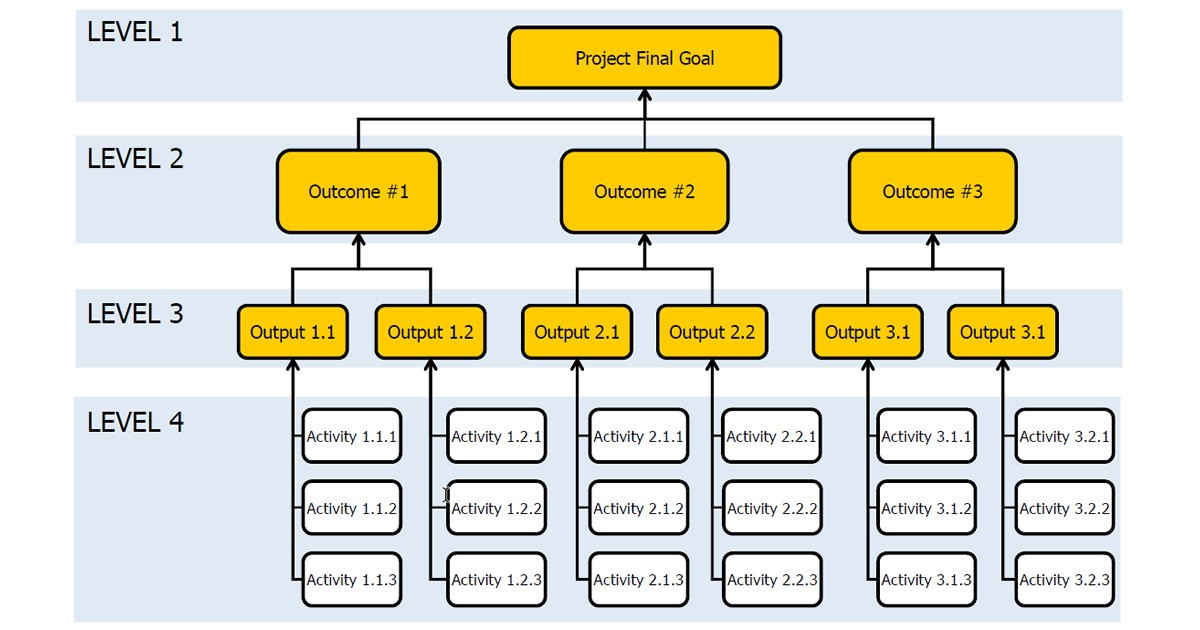
How to Create a Work Breakdown Structure
In project management, a Work Breakdown Structure (WBS) is a deliverable-oriented breakdown of a project into smaller components. Sometimes project managers have a hard time getting a WBS started because they are not sure what to put at the very top, and they are uncertain about how to break the work down from there. Although there are many ways that the WBS can be started, the ultimate focus is on objectives. The top level is the overall project goal, and then the next level describes the main objectives. After the objectives are described, all the activities can be defined that are required to build the objectives. The project schedule is ultimately made up of activities, but the activities need to be listed in the context of the objectives they are helping to build. The WBS should follow the same logic used in the design of the project (the logical framework) that describes the cause-effect relationship of the project. Level 1 is to describe the project main goal, the next level will identify the project objectives (outcomes), level 3 the project outputs, and level 4 the project activities.
When the team is creating the WBS, there are usually questions about how detailed the activities should be. The answer determines when to stop breaking the work down into smaller activities. Part of the answer is to utilize an overall estimating threshold. Other things to take into account include:
- The activity can contain sub-activities that are related and continuous. For instance, if you had an activity called 'Create Learning Strategy and Training Strategy', it probably should be broken down further, since the Learning Strategy and Training Strategy are not necessarily related, and they are not necessarily continuous.
- The activity should be able to be completed by one person, or one group of people. If you have an activity that requires different people for different sub-activities, then it should be further broken down into the sub-activities so that a person or the same group of people can complete the entire activity.
- The activity needs to be fully understood by the team creating the WBS. If you have an activity that is not understood by the team, it should be further broken down into its sub-activities to provide further clarity.
- The work should be broken down to a level that makes sense for the project manager to control. A common rule is to break the activities that are larger than 80 hours and not break those that are less than 8 hours.
It is important that the WBS doesn't get too tall or too deep. Depending on the WBS approach, it may take three to four levels to get all the defined activities. The general rule of thumb is that the number of levels should not exceed five. Smaller projects may not need more than two or three levels for each objective. For a large project, the levels might be deeper. However, there is a point where the detail will be too complex to manage. If the WBS has five or more levels for an objective, the project may be defining the work at too low levels (tasks that take less than 8 hours to accomplish). Another issue is when the objective is defined too broadly. In that case, the objective can be broken up into two or three sub-objectives that are smaller but integrated.
Want to learn more? Register for the next session of our online course, Adaptive Project Management for Development Organizations and NGOs. Register now and obtain a 20% discount with the promo code 20APM. Click on the link to find out more about this course. https://www.pm4dev.com/elearn/ecourses/eapm.html
Social and Behavior Change Officer- UNV
1yvery informative. Thank you